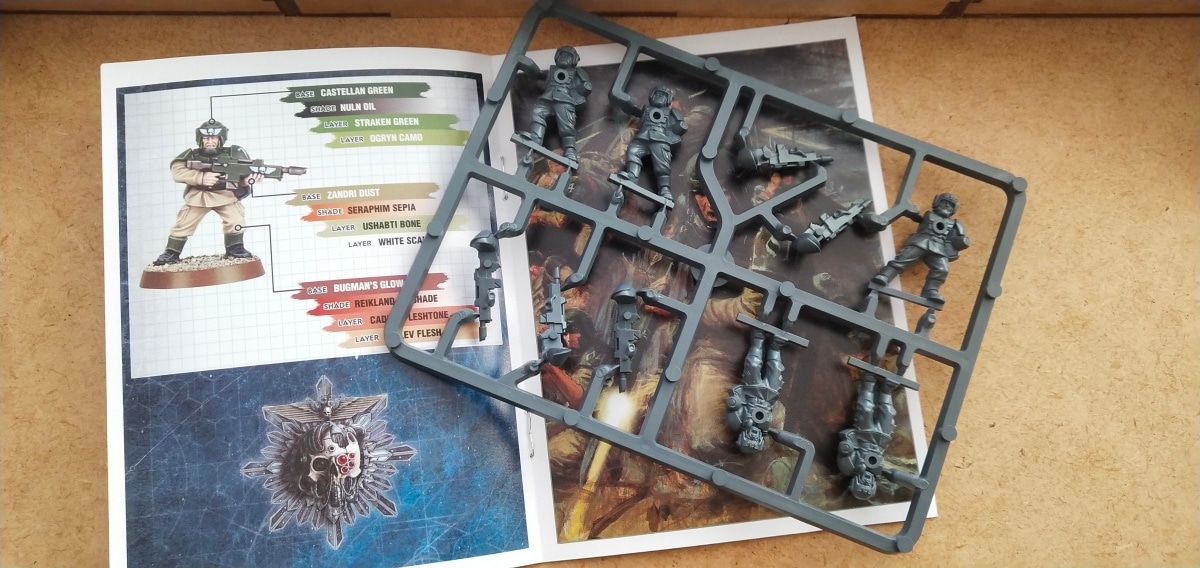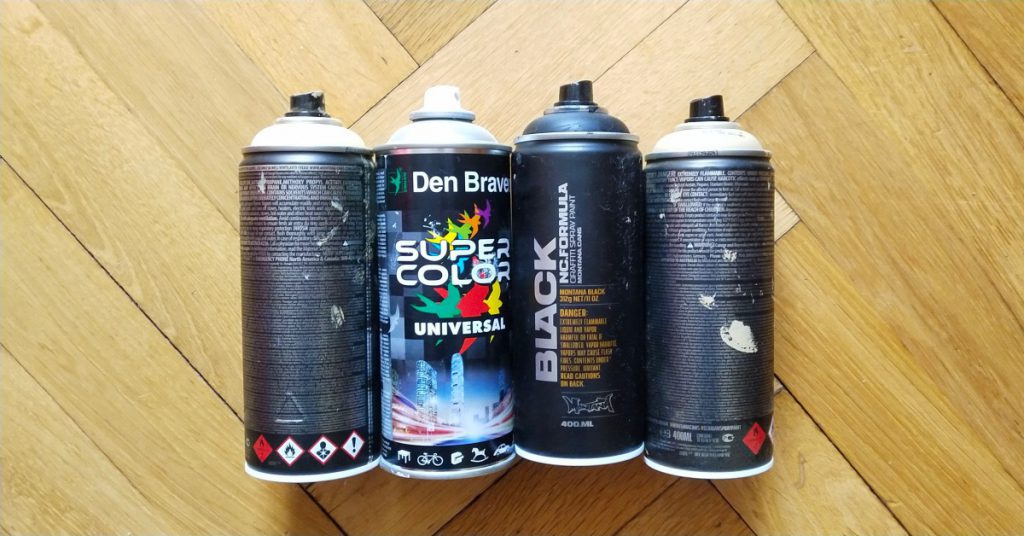
Before
painting you need to primer your models. This is one of many ‘golden
rules’ of miniature painting. You can primer your models by using a
brush, airbrush and spray paint primer. If you have a horde of
miniatures to prime a brush is not the most tempting way to do it.
Not everyone have an airbrush, so a spray paint seems to be the best
and quickest option.
However, it is often not as easy as it seems.
Let’s have a look how to make it easier for your, by providing few
tips and tricks and why you should prime your models.
Why priming is important
The case with priming is the same as with washing your models in warm water with some soap. Most people will tell you that it is essential, other will tell you that it is not important at all. I always prime my models and for me it’s just common sense.
So, why you should prime your models?
Mainly, to prevent paint from flaking off your miniatures. Paint can have adhesive problems when used directly on plastic, metal or any other material that the miniature is made of. By priming the model you are creating a better surface for next layers of paint. You will find that primed models can be easier to paint as the paint sticks to them better, than to unprimed miniatures.
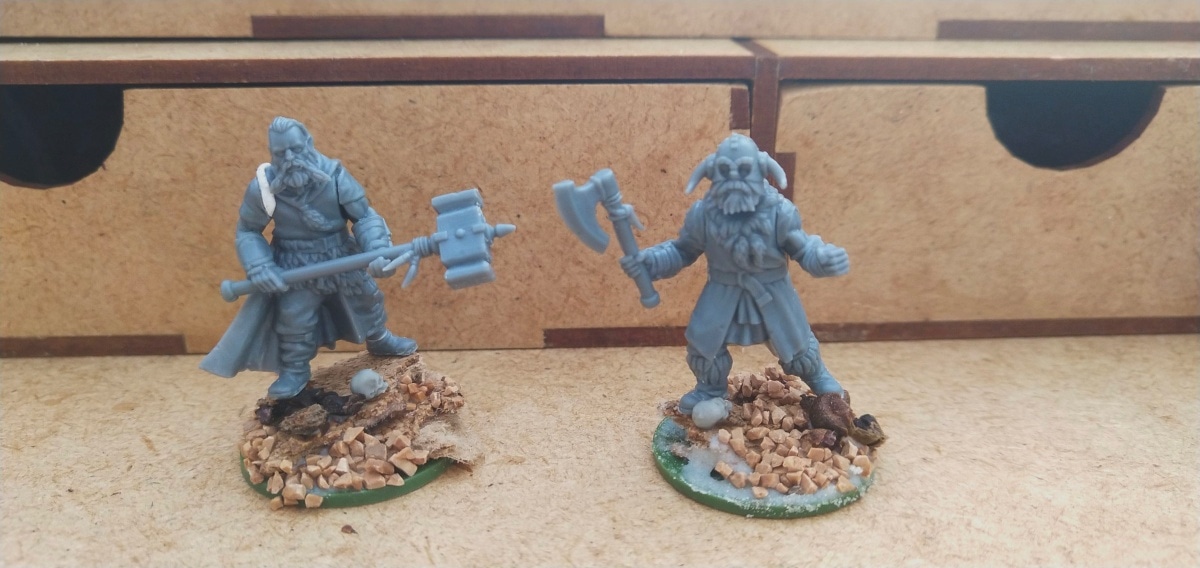
Painted models that were primed before painting are less likely to paint chipping when damaged during a game. Imagine that by a mistake you or your friend caused a model to fall from the table on the floor. Such fall can damage the models itself, not to mention the paintjob. Primed models, even when the paintjob is damaged and chipped in few places, should not show the bare metal or plastic, but the primer in those chipped places. In some cases, the paintjob will not take any damage thanks to the paint strongly sticking to the primer.
What color to use for priming your miniatures?
In
general there are three colors that most people use: black, white and
(light) grey. Those three colors are the most commonly used when
priming your miniatures. Before choosing the color you need to know
what you want to achieve. On black primer it will take more time and
layers of paint to get bright colors. When a miniature is primed with
white paint, all colors will be brighter, not as dark as when painted
on black primer. What if you are looking for more neutral color? Here
comes the grey primer to help you out. Grey color is considered to be
a neutral one, compared to black and white. Colors will not be too
bright, or too dark. We can say that they are going to be ‘toned
down’ a bit.
For beginner painters I would suggest a grey
primer. By many painters it is consider the easiest one to work with
and the most universal one.
It is worth to mention that you can use many other colors to prime your models. It makes sense especially, when you are painting an army and can treat your primer as a basecoat.
Then you are just making your life much easier and speeding up you painting as you have 2in1: models primed and base coated at once.
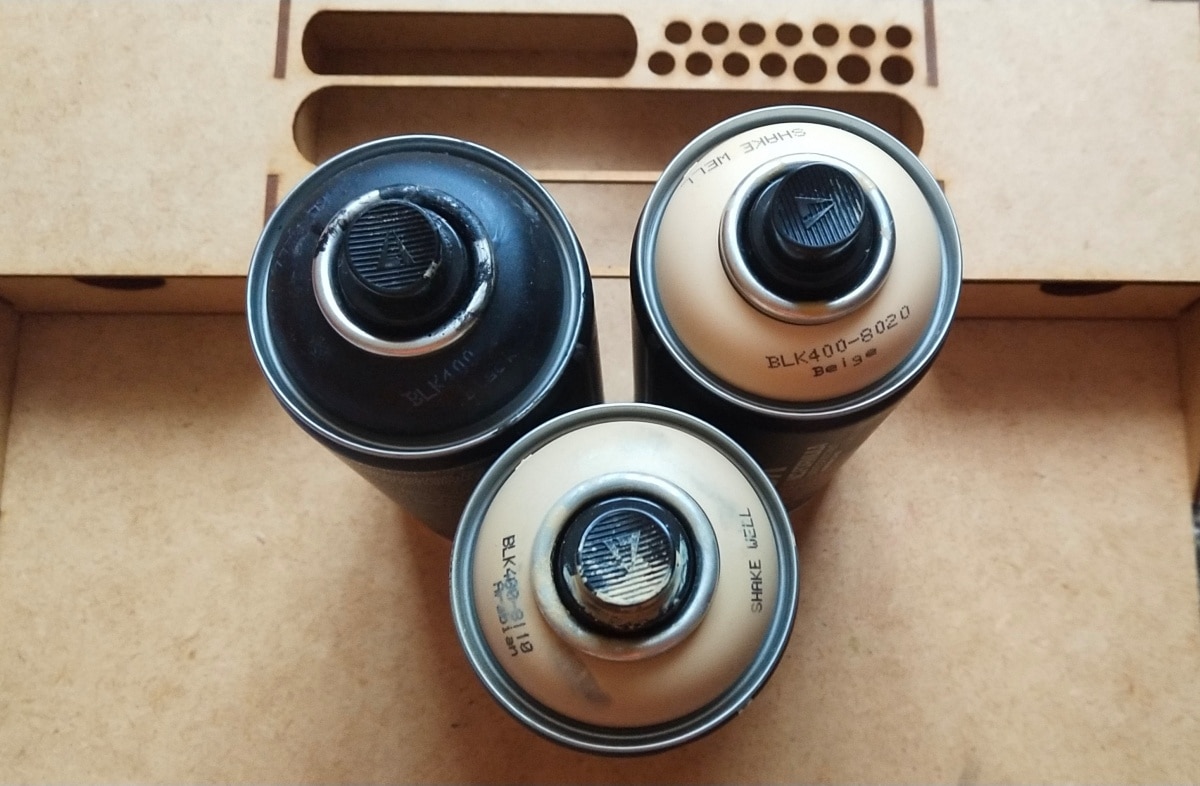
What spray paint brand to use
There are many different brands on the market and at first it might be quite hard to choose the right one, especially when you are a beginner. So what brand to choose?
I would say that the best idea would be to choose one of the brands dedicated to miniature painting. Which means: Games Workshop, Army Painter, Vallejo, Tamiya and the list goes on… Miniature dedicated primers were made especially for priming models. In other words they are designed for miniatures and should not melt them or damage them in any other way. Plus, they are expected to provide good coverage with thin layer(s) of paint and allow all those nice details to be seen through the primer.
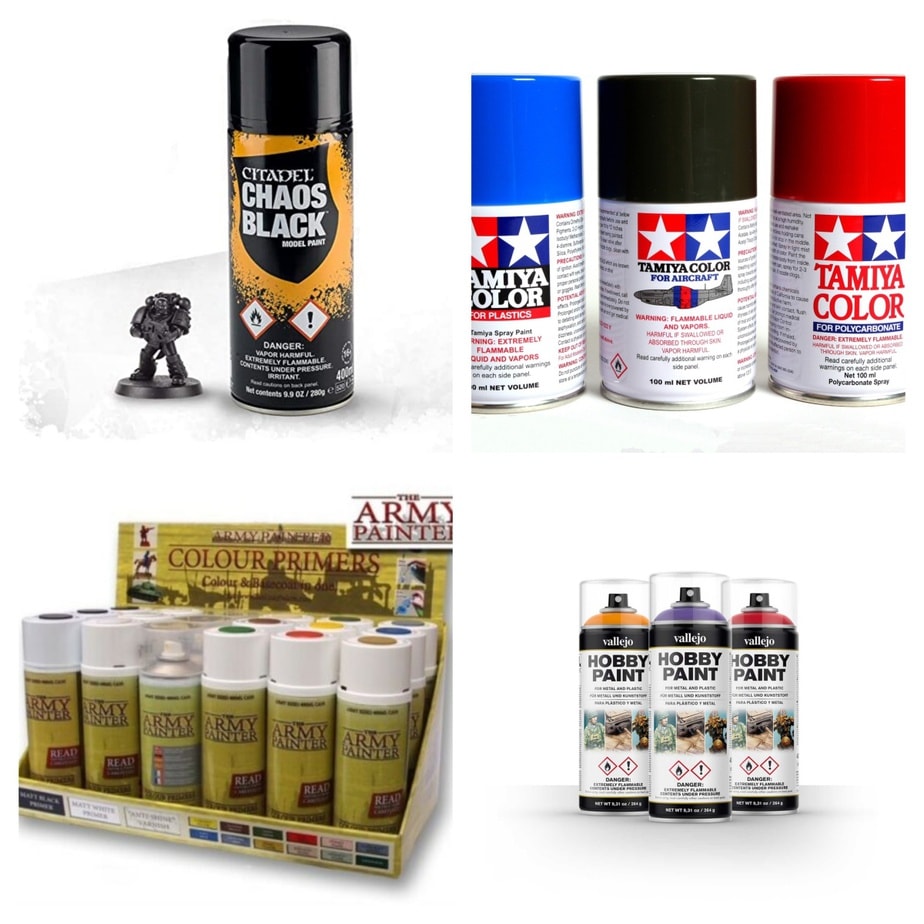
The downfall is that they can be quite pricey at times.
What about using cheaper not dedicated spray primers?
It is natural that you will try to find a cheaper alternative to the expensive dedicated spray primers. It is possible to get a quite good spray primer that was not made especially for miniatures, but still provides nice coverage and does not damage your models.
The question is which one to choose and which one is the best?
I
cannot give you one name and be 100% sure that it will not damage
your models and that you will be happy with the achieved result. I
can, however, give you few names as a starting point where to look
and what other modelers are recommending to try. Have a look at the
offer of:
– Krylon primers (color master paint + primer)
–
Brite Touch (general purpose primer)
– Rust-Oleum Automotive
Primer (probably best for metal)
– Deco Color
– Dupli Color (or
Dupli-Color)
– Den Braven
– MONTANA (Gold and Black series)
You can find one of those brands in most countries and builders warehouses or even supermarkets. Before buying any of them please make sure that you are buying a PRIMER, and that it’s a MATT one. Believe me, you don’t want to end up with a gloss primer or just black gloss paint instead of a primer. Also make sure that you are NOT taking a VARNISH
Few things to have in mind when using cheap spray primers
Cheaper
primers most advantage is that they are cheap. Sometimes they also
provide a better protection and adhesion than miniature dedicated
spray primers. Unfortunately they are few downfalls that you need to
have in mind when buying and using those cheap primers:
– they
tend to have more aerosol in them than miniature dedicated primers
(you can overspray the miniature and it can be harder to control the
spraying itself)
– they stink. Yeap, they simply stink and the
smell can be still there even after leaving the model for 24-48h
outdoors
– it is safe to say that in most cases paint is
thicker than in dedicated miniature spray primers. This may lead,
again, to overspraying and flooding your models with paint, losing
all those lovely details.
–
they might damage your models. I am thinking mostly about plastic and
resin models, but metal miniatures are no exception. You never know
how the primer will react with plastic, metal or resin. Car primers
melting plastic or resin miniatures are nothing new 😉
Ok, so if there are so many ‘general’ disadvantages are they actually worth the hassle? The short answer is yes, but you need to be careful and find the one that is right for you.
Before applying any primer on your miniature take a spare model or a model sprue and check if you are satisfied with the result. If you are not happy how the primer looks, it’s too glossy or maybe it is flaking off the plastic it’s not for you. The same goes if it melts the plastic, it’s sticky, or the paint is to too thick – it is not worth the hassle.
My own experience
For the last few days I was priming around 12-15 HDF terrain kits and some plastic GW models with some cheap and cheap-ish primers. We will talk about working with HDF and MDF another time though 😉
What are my conclusions?
I will not recommend White Den Braven Super Color Universal spray paint for priming MDF or models. The paint is way too thick for my liking and the coverage is not too good either. However, white is a tricky color and it is hard to find a good white paint and primer. In the contrary, Den Braven Black Matt is OK for me. I can recommend it, but you need to be careful not to overspray the miniature.

I love the MONTANA Black series of paint. It is very good for HDF and MDF kits and the color palette is just amazing! Plus the price is quite good (17zł/7$) compared with the dedicated miniature primers. I have not tried to prime any miniatures with it so far, but will make a try especially for you soon. One of my friend’s advised me not to use in on miniatures, as for him the paint is way too thick for our hobby needs. However, my other friend told me that MONTANA Black series Black Matt paint is ok for him for miniatures. I will need to see it for myself 😉
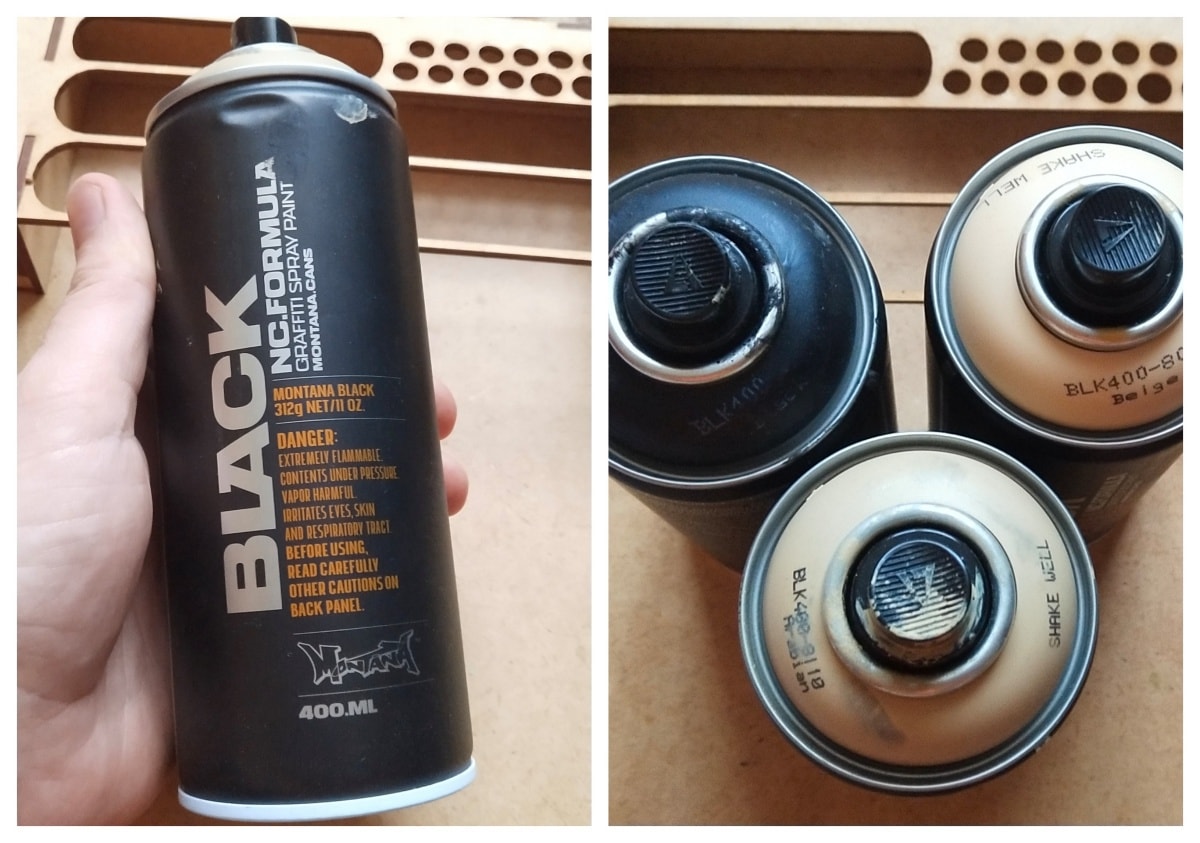
What’s next?
In second part of ‘How to prime your models with spray paint’ I will talk more how to use spray primers, or better to say how to make them work. How to prepare cans before priming and use them properly. I will also give you some tips how to avoid most common mistakes that people do with spray paints in general.
